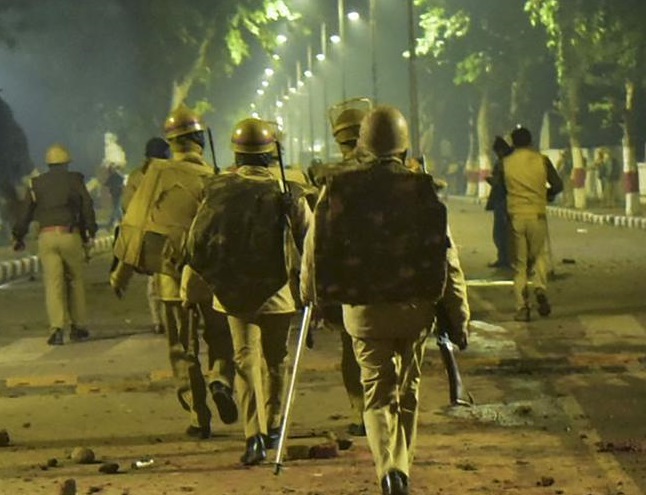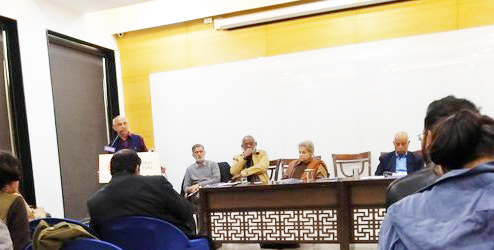Last Updated on December 25, 2019 1:54 pm by INDIAN AWAAZ

WEB DESK
A fact-finding team comprising lawyers, human rights workers, journalists and academics has found that Police used ‘excessive force’ and committed “unbridled human rights violations” against students of Aligarh Muslim University (AMU) in the campus on December 15.
Releasing the report titled ‘The Siege of AMU’ at a media conference here on Tuesday, former IAS officer and columnist Harsh Mander said the students’ testimonies to the team had revealed that the AMU administration, district authorities and the UP government had failed in their duty to protect the campus and its residents against the UP police’s “brutality”.

Police used “stun grenades” against the “peacefully” protesting students which are normally used only against terrorists and dangerous criminals, Mander said.
The UP government, however, has maintained that there were no police excesses while handling the violence at AMU and the personnel only did their lawful duty.
The report has claimed that when the violence was being let loose, even ambulances, which rushed to move the injured students to hospitals, were attacked by the cops and the drivers and paramedical staff were attacked and manhandled and asked to stay away from the injured students.
Social activist and author Natasha Badhwar, who was part of the team, said the students have claimed that police uttered “Jai Shri Ram” while attacking them and were totally “anti-Muslim” in their behaviour.
Former IAS official and human rights activist Harsh Mander, Delhi University professor Nandini Sundar, senior journalist John Dayal and film-maker Natash Badhwar were among those who interacted with about 100 members of the faculty, students, doctors and several members of the university administration on December 17.
“We did not see blood spots and broken vehicles, but tear gas shells were visible at various places. All signs of the violence had been expertly removed…,” said the report, which also recognised the contributions of Syed Mohammad Zaheer and Varna Balakrishnan, research fellows with Karwan-e-Mohabbat.
The team members said that in just two days, about 21,000 resident students were evicted from the university premises. They met some of the injured students, including a doctoral scholar whose palm was blown off in an explosion and had to be amputated. Mr. Mander said stun grenades were used by the forces, as told by the Registrar, who is a serving IPS officer.
Mr. Mander said although it was hard to reach a formal conclusion on how the violence started on the campus, nothing could justify the scale and nature of police and RAF action.

“Stun grenades are used only in war situations, or militarised police action such as against dangerous terrorists, never to quell student protests,” said the team. Based on testimonies of students, teachers, video footage, medical opinion and remarks of administration, besides physical evidence, they said tear gas shells, sound bombs, rubber bullets and lathis were also used on students.
The team found that religious slurs were used against the students. “According to one student, ‘it looked as though the police had a deep-seated hatred towards us, which they wanted to vent by treating us in the most barbaric manner’,” said the report.
Condemning the “militarisation” of response to students’ protest, Mr. Dayal said the forces had “gone beyond lathi charge, water cannon and tear gas shells”.
The report claimed that the violence was “largely unprovoked by police”, more “brutal than even in Jamia Millia Islamia” (in Delhi) and in any university in recent memory.
The report claimed that the AMU administration had “unconscionably abandoned its students and threw them to a hostile and pitiless state”.
